Biohacking your brain’s health: A guide to optimizing cognitive performance
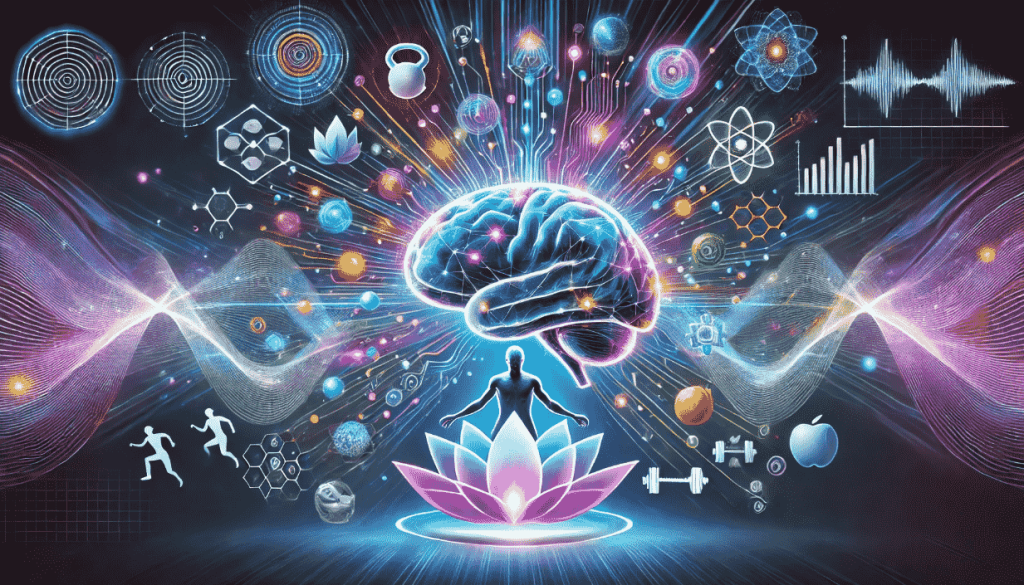
Biohacking your brain’s health: A guide to optimizing cognitive performance Biohacking your brain’s health is a concept that merges the latest scientific insights and self-improvement strategies to help you think faster, maintain focus, and protect your cognitive function as you age. While “biohacking” initially gained prominence in the do-it-yourself biology movement, it has evolved into a broader approach that includes nutrition, technology, exercise, and lifestyle changes—all aimed at optimizing your mind’s performance. In this article, we will explore the core principles of biohacking your brain, diving into practical techniques, advanced methods, and the most up-to-date research on how to boost your brain health. If you’ve ever wondered how to improve memory, increase mental clarity, and enhance overall brain function, read on. Join our Online Workshops: What does “biohacking your brain” mean? Biohacking your brain involves applying experimental, personalized, and research-based interventions to optimize your cognition. Biohackers believe that by modifying environmental, nutritional, and technological factors, you can enhance learning and memory, reduce brain fog, and even slow down age-related cognitive decline. From “brain biohacking exercises” like memory games to more cutting-edge techniques such as transcranial stimulation, these approaches target areas of the brain that govern focus, problem-solving, and long-term mental health. Key principles of brain health Balanced nutrition A balanced diet is crucial to keep your brain functioning at its best. Diets high in fruits, vegetables, whole grains, and lean protein—like fish—provide essential nutrients that help maintain neuron health and reduce the risk of neurodegenerative diseases. For instance, the MIND diet combines elements of the Mediterranean and DASH diets, emphasizing green leafy vegetables, berries, nuts, and fish rich in omega-3 fatty acids. Research suggests that adherence to the MIND diet can lower the risk of Alzheimer’s disease by up to 53% in strict followers. Quality sleep for cognitive function Getting at least 7.5 to 8 hours of quality sleep each night is one of the simplest, yet most powerful ways to boost your brain. During sleep, your brain flushes out toxins, consolidates memories, and regenerates nerve cells. Chronic sleep deprivation can lead to impaired memory and reduced focus, contributing to long-term cognitive impairment. The role of physical activity Physical exercise elevates blood flow to the brain, increasing oxygen and nutrient delivery to brain cells. Regular physical activity—whether it’s high-intensity interval training, strength training with free weights, or moderate aerobic workouts—supports the release of brain-derived neurotrophic factor (BDNF), a neurotrophin that promotes the growth of new neurons and improves neural connections. Stress management Stress (biology) significantly impacts cognitive abilities and memory. Chronic stress leads to higher levels of cortisol, a hormone that can damage the hippocampus (an area of the brain critical for memory) when elevated for extended periods. Techniques such as mindful meditation, breathing exercises, or even adopting a new hobby can help reduce stress and protect your cognitive function. Biohacking brain technology and approaches Tracking cognitive performance One of the earliest steps in any biohacker’s journey is to quantify their current cognitive performance. Wearables and smartphone apps can measure sleep patterns, heart rate variability, and even track daily stress levels. By collecting real-time data, you can identify trends that may be impacting your cognition and then fine-tune your lifestyle accordingly. Brain training games and exercises “Brain biohacking exercises” often include puzzle games, memory tests, and language apps designed to challenge your working memory and executive function. A pilot study published in 2019 found that daily use of brain training apps could lead to short-term improvements in memory and attention, although more clinical trials are needed to confirm long-term efficacy. Emerging tech: Neurofeedback and beyond Neurofeedback devices and transcranial electrical or magnetic stimulation (tDCS, TMS) are gaining attention in the biohacking community. These technologies claim to help improve focus, learning, and mood by delivering mild currents or magnetic pulses to targeted areas of the brain. While some human studies have shown promising results, it’s critical to weigh ethical considerations, potential adverse effects, and consult a healthcare professional before using them. Building a brain-friendly diet Understanding the MIND diet The MIND diet emphasizes foods like green leafy vegetables, nuts, whole grains, beans, poultry, olive oil, and fish. Studies show a strong correlation between the MIND diet and a lower risk of developing Alzheimer’s disease, partly due to its emphasis on antioxidants and anti-inflammatory foods that protect neurons from cellular damage. Fill up on omega 3’s Omega-3 fatty acids, found in fish oil and certain seeds (chia, flax), are essential for maintaining brain cell membrane integrity. Some research indicates that diets high in omega-3 fatty acids can help improve memory, reduce inflammation, and potentially reduce the risk of dementia. Consider fatty fish like salmon or sardines, or opt for fish oil supplementation if you struggle to consume enough through diet alone. Curcumin (turmeric) and dietary supplements Curcumin, the active compound in turmeric, is a potent antioxidant that may help reduce inflammation and oxidative stress in the brain. When combined with piperine (found in black pepper), curcumin’s bioavailability skyrockets. Additional supplements such as vitamin D, magnesium, or even nootropics like L-theanine can give your brain a gentle boost, but be mindful of research-backed doses and consult a healthcare professional for personalized advice. Managing glucose levels Your brain runs primarily on glucose, but excessive sugar spikes can lead to insulin resistance and chronic inflammation. By opting for complex carbohydrates, practicing intermittent fasting, or balancing macronutrients, you can avoid harmful blood sugar swings that may impair cognition over time. Lifestyle changes that optimize cognitive abilities Sleep 8 hours Consistently getting around 8 hours of sleep is associated with better mental clarity, faster learning, and a reduced risk of age-related neurodegenerative diseases. During sleep, your glymphatic system clears out metabolic waste from the brain, preventing the buildup of amyloid or tau proteins linked to Alzheimer’s disease. Try intermittent fasting The effects of intermittent fasting on brain health are increasingly recognized. According to neuroscientist Mark Mattson, fasting increases BDNF levels, which promotes the growth of new neurons and may improve mood and cognitive function. Intermittent fasting
Biohacking for women: a comprehensive approach to optimal health and wellness

Biohacking for women: a comprehensive approach to optimal health and wellness Biohacking, at its core, involves making strategic, often science-based tweaks to your lifestyle to improve physical, mental, and emotional well-being. While the practice has gained significant popularity over the last decade, many people don’t realize that biohacking for women can involve unique considerations tied to hormonal fluctuations, life stages, and specific health concerns. Join our Online Workshops: Understanding the concept of biohacking for women Biohacking is more than just a trend—it’s a growing movement that advocates for informed self-experimentation. Whether you’re trying to balance hormones, improve mental clarity, or increase energy levels, biohacking techniques can help you optimize health by making targeted lifestyle changes. Unlike one-size-fits-all approaches, biohacking empowers you to explore personalized strategies based on your unique physiology. Why women’s physiology matters in biohacking Women undergo monthly hormonal changes tied to the menstrual cycle, with fluctuations in estrogen and progesterone influencing everything from mood to metabolic rate. Research suggests that up to 80% of women experience PMS symptoms at some point in their lives, underscoring the importance of hormone-aware strategies. Moreover, women face additional milestones—pregnancy, perimenopause, and menopause—all of which can affect energy levels, weight management, and mood. Tailoring strategies by life stage Puberty and early adulthood: Laying a foundation for healthy habits like balanced nutrition and regular exercise can set the stage for lifelong wellness. Reproductive years: Addressing PMS, painful periods, hormonal imbalances, and potential chronic conditions like PCOS (polycystic ovary syndrome) requires more targeted interventions. Perimenopause and menopause: These phases bring about hormonal changes that can affect bone density, cognitive function, and sexual health. Core biohacking principles for women Regardless of age or health status, there are essential strategies every female biohacker can adopt. These foundational principles serve as the bedrock upon which more advanced biohacks are built. Data tracking with wearables Technological advancements, such as the Oura Ring and other wearable devices, allow women to monitor important metrics like sleep quality, resting heart rate, and circadian rhythms. These tools simplify the process of collecting evidence-based data, offering insights that can guide informed decisions about diet, exercise, and sleep optimization. Stress management and mindfulness Chronic stress elevates cortisol, the body’s primary stress hormone, which can lead to weight gain, mood swings, and decreased cognitive function. Techniques like guided meditations, yoga, and breathwork have shown efficacy in reducing anxiety and promoting mental clarity. In fact, a study published in the Journal of the American Medical Association (JAMA) indicates that mindful practices can significantly reduce stress-related symptoms and improve overall well-being. Lifestyle changes: a holistic perspective A successful biohacking plan goes beyond singular fixes and involves a comprehensive lifestyle approach. Optimizing sleep habits, addressing nutritional needs, and managing stress collectively form the basis for women’s health. This broad-based approach is essential for long-term results and addresses issues like hormonal balance and metabolic regulation. Biohacking diet for women Nutrition is a cornerstone of women’s health, influencing everything from hormone production to gut microbiome diversity. Tailoring your diet to your unique physiology can have a profound impact on your energy levels, weight management, and overall well-being. Balancing macronutrients Protein: Aim for 1.2–1.6 grams of protein per kilogram of body weight, focusing on lean sources such as fish, poultry, beans, and legumes. Healthy fats: Incorporate avocados, nuts, seeds, and olive oil for essential fatty acids that aid in hormone production. Complex carbohydrates: Opt for whole grains, legumes, and vegetables to help stabilize blood sugar levels and support gut microbiome health. Hormone-friendly foods Cruciferous vegetables (broccoli, kale, cauliflower) can support estrogen metabolism. Flaxseeds and chia seeds provide phytoestrogens that may help moderate hormonal imbalances. Fermented foods (kimchi, sauerkraut, kefir) bolster gut health, which plays a role in hormone balance and immune function. Intermittent fasting, cycle syncing, and more While intermittent fasting is a popular biohack, women often benefit from more nuanced approaches. Shorter fasting windows—such as 14:10 or 16:8—may be more suitable for maintaining hormonal balance. Additionally, cycle syncing your diet—adjusting caloric intake or nutrient emphasis depending on the phase of your cycle—can help mitigate PMS symptoms and promote optimal hormonal health. Exercise and movement Physical activity is a well-established factor in longevity, cardiovascular health, and stress relief. However, women should be mindful of how hormonal changes might affect workout performance and recovery. Strength training for bone health Women naturally face a higher risk of osteoporosis, particularly post-menopause. Incorporating resistance training at least twice a week helps maintain bone density and muscle mass. Pilates, for instance, can be a gentle yet effective way to build core strength and flexibility. High-intensity interval training (HIIT) If your schedule is tight and you’re looking to boost energy levels and cognitive function, HIIT offers a time-efficient solution. Short bursts of intense effort followed by brief rest intervals can improve cardiovascular health, metabolism, and overall fitness in less time compared to traditional endurance workouts. Balancing intense workouts with restorative practices Overtraining or ignoring rest can lead to hormonal imbalances and chronic stress. Incorporate yoga, gentle stretching, and mindfulness sessions to promote healing, reduce inflammation, and support hormonal health. Sleep optimization for women Circadian rhythms govern vital processes such as hormone secretion, cell regeneration, and metabolism. Disrupted sleep can contribute to insulin resistance, weight gain, and even mood disorders. Blue light exposure and bedtime routines Minimizing screen time before bed can substantially improve sleep quality. Exposure to artificial blue light suppresses melatonin, the hormone that regulates the sleep-wake cycle. Using blue light-blocking glasses or installing apps that reduce blue light emission can promote deeper, more restorative sleep. Improving sleep quality with wearables Wearables such as the Oura Ring monitor sleep stages, heart rate variability, and nighttime movements. By examining daily sleep data, you can make targeted adjustments—like going to bed earlier or avoiding caffeine in the afternoon—to enhance overall well-being. Addressing chronic conditions and stress hormone imbalances Research indicates that chronic sleep deprivation is linked to increased risks of chronic diseases, including cardiovascular issues and metabolic disorders. By prioritizing sleep and utilizing biohacks like aromatherapy, breathwork, and
11 best biohacking books for beginners and experts
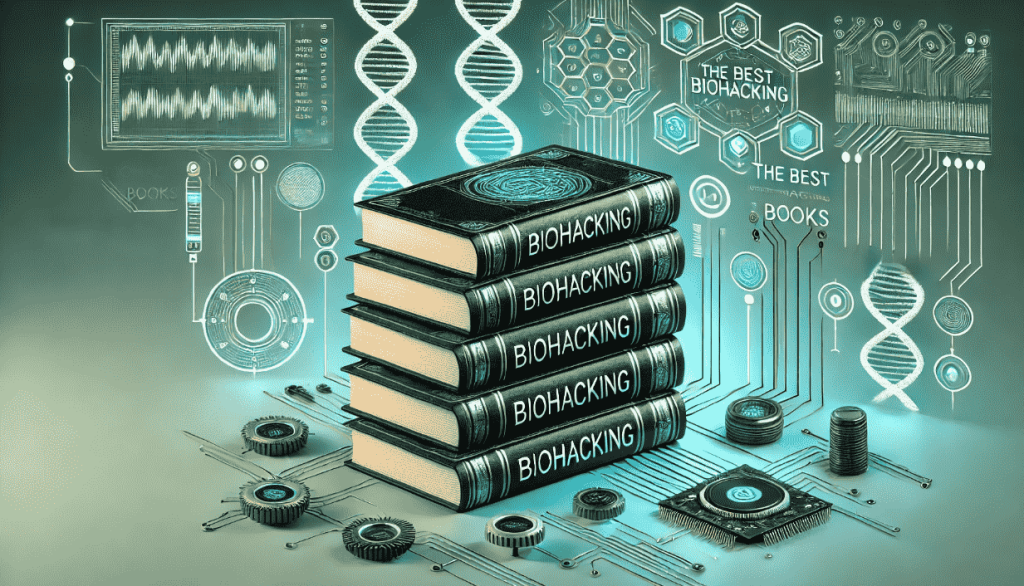
11 best biohacking books for beginners and experts Biohacking involves optimizing one’s health and performance through various techniques and lifestyle changes. For those interested in delving deeper into this subject, several books offer comprehensive insights. Here are some of the top biohacking books: Join our Online Workshops: Foreverolimus: The rise of biohacking and senolytics Author: Viktor Simunovic This book is a comprehensive exploration of the scientific advancements, ethical considerations, and societal implications of biohacking and longevity therapies. Viktor Simunović delves deeply into groundbreaking topics like biomarkers, senolytics, CRISPR, and the conceptual leap to “Foreverolimus,” a pharmaceutical marvel aimed at revolutionizing aging and health optimization. https://www.amazon.com/dp/B0DNKQPCBX Boundless: Upgrade your brain, optimize your body & defy aging Author: Ben GreenfieldA comprehensive guide offering strategies to enhance mental and physical performance, focusing on nutrition, exercise, and lifestyle adjustments to promote longevity and vitality.https://www.amazon.com/Boundless-Upgrade-Brain-Optimize-Aging/dp/1628603976 Lifespan: Why we age—and why we don’t have to Author: David SinclairExplores the science behind aging and presents insights on how to slow down or even reverse the aging process through lifestyle interventions and emerging technologies.https://www.amazon.com/Lifespan-Why-Age_and-Dont-Have/dp/1501191977 The bulletproof diet Author: Dave AspreyIntroduces a high-fat, low-carb diet designed to boost energy, enhance cognitive function, and promote weight loss, based on Asprey’s personal biohacking experiments.https://www.amazon.com/Bulletproof-Diet-Become-Leaner-Smarter/dp/162336518X Why we sleep: Unlocking the power of sleep and dreams Author: Matthew WalkerDelves into the critical importance of sleep and its profound impact on health, learning, mood, and longevity, while offering tips to improve sleep quality.https://www.amazon.com/Why-We-Sleep-Unlocking-Dreams/dp/1501144316 The 4-hour body Author: Tim FerrissProvides unconventional advice on rapid fat loss, improved sex, and becoming superhuman, based on extensive research and self-experimentation, aiming to optimize various aspects of life.https://www.amazon.com/4-Hour-Body-Uncommon-Incredible-Superhuman/dp/030746363X The awakened ape: A biohacker’s guide to evolutionary fitness, natural ecstasy, and stress-free living Author: Jevan PradasCombines evolutionary biology with practical advice to achieve optimal health and happiness, advocating for a return to ancestral lifestyle practices.https://www.amazon.com/Awakened-Ape-Biohackers-Evolutionary-Stress-Free/dp/1535183407 Super human: The bulletproof plan to age backward and maybe even live forever Author: Dave AspreyShares techniques to slow down aging and enhance quality of life, aiming for longevity through biohacking practices and technological interventions.https://www.amazon.com/Super-Human-Bulletproof-Backward-Forever/dp/0062882821 Breath: The new science of a lost art Author: James NestorInvestigates the science of breathing, revealing how slight adjustments in breathing techniques can improve health, athletic performance, and overall well-being.https://www.amazon.com/Breath-New-Science-Lost-Art/dp/0735213615 The oxygen advantage Author: Patrick McKeownIntroduces breathing techniques aimed at improving health, weight loss, and athletic performance, emphasizing the benefits of proper oxygen utilization.https://www.amazon.com/Oxygen-Advantage-Scientifically-Breathing-Techniques/dp/0062349473 The biohacker’s handbook Authors: Olli Sovijärvi, Teemu Arina, Jaakko HalmetojaA comprehensive guide covering various aspects of biohacking, including sleep, nutrition, exercise, work, and the mind, with practical tips to enhance overall well-being.https://www.amazon.com/Biohackers-Handbook-Upgrade-Yourself-Potential/dp/9527241070 Subscribe to the FOREVEROLIMUS Newsletter Sign up to join 500,000+ other subscribers and receive regular emails on neuroscience, health and science-related topics.
Biohacking for weight loss. How to do it effectively?
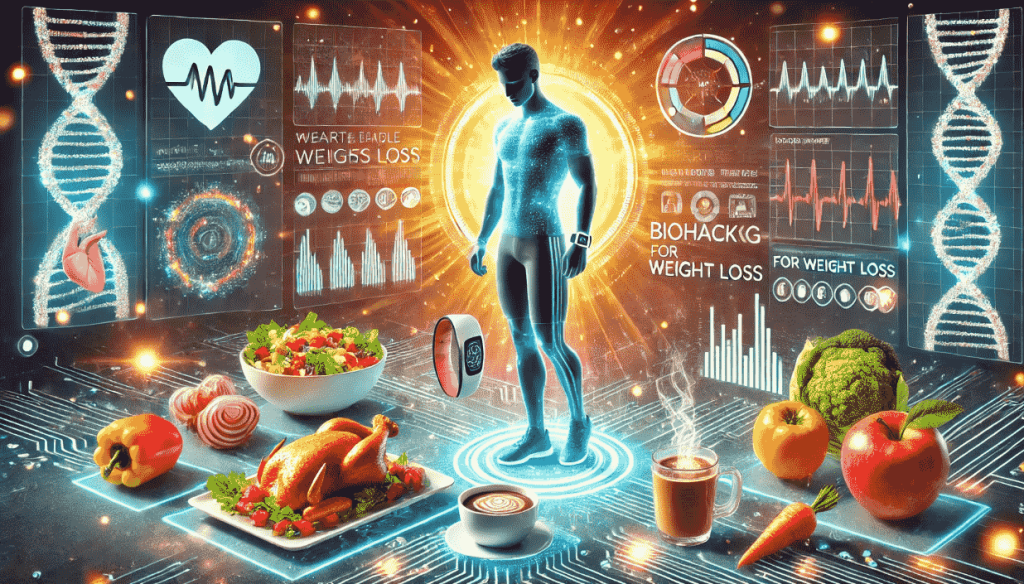
Biohacking for weight loss. How to do it effectively? Biohacking for weight loss is an emerging trend that combines biology, technology, and self-experimentation to optimize the body for better health and efficient fat burning. Essentially, it’s about using science-driven strategies—ranging from wearable tech to dietary tweaks—to achieve results faster and more sustainably. It’s a comprehensive approach that merges traditional health advice with cutting-edge tools to help you lose weight and keep it off. Why does biohacking matter for weight loss? Studies show that around 39% of adults worldwide are overweight, and 13% are obese according to the World Health Organization. With these statistics on the rise, many individuals are searching for methods that go beyond standard dieting. Biohacking offers a more personalized, data-driven, and holistic strategy to weight management. From intermittent fasting and nutrient timing to high-tech gadgets and hormone balancing, biohacking can provide deep insights into your body’s unique needs. Join our Online Workshops: Understanding the science behind biohacking To appreciate how biohacking can improve metabolic rate, it’s useful to explore the science behind it. Metabolism is the process by which the body converts food into energy. When we talk about how biohacking improves metabolic rate, we’re focusing on techniques that enhance the efficiency of this conversion, often by optimizing hormones like insulin, leptin, and ghrelin. Insulin: This hormone regulates blood sugar levels. Chronic high insulin can lead to insulin resistance, making weight loss more challenging. Biohacking methods like intermittent fasting improve insulin sensitivity, so the body uses stored fat more effectively. Leptin: Known as the “satiety hormone,” leptin signals the brain when you’re full. Dysregulation here can lead to overeating. Biohacking your leptin response might involve improving sleep patterns and reducing processed foods. Ghrelin: Dubbed the “hunger hormone,” ghrelin spikes when you’re hungry. Strategies like mindful eating and balanced nutrient intake can help keep ghrelin levels in check. Modern biohackers also leverage data and personalized approaches to optimize weight loss. Wearables like continuous glucose monitors and sleep trackers provide real-time insights. DNA testing services can reveal genetic predispositions that influence metabolism and food sensitivities. By translating this data into actionable steps—whether it’s adjusting macros or changing workout intensity—biohackers can accelerate progress and maintain more consistent results. Setting realistic weight loss goals Before diving into advanced biohacking strategies, it’s crucial to set realistic targets because many people overestimate how quickly they can lose weight, leading to frustration and burnout. Determine your ‘why’: Are you trying to improve your energy levels, fit into a certain clothing size, or boost overall health? A strong reason behind your goal ensures motivation remains high. Recommended rate of weight loss: Health experts suggest losing about 0.5 to 1 kilogram (1 to 2 pounds) per week. This rate helps maintain muscle mass and prevents metabolic slowdown. Track progress: Using biohacking tools like body composition scales or mobile apps allows you to see subtle changes in fat percentage, muscle mass, and water retention. Remember, weight loss is not a one-size-fits-all journey. Your baseline metabolism, hormonal balance, and lifestyle factors are unique. Start with achievable goals, and adjust them as you gain insights from your biohacking experiments Optimizing sleep for fat burn One of the most overlooked factors in weight loss is the power of high-quality rest. Sleep hacks for better weight loss often involve regulating hormones like melatonin and cortisol. Research shows that inadequate sleep disrupts metabolic functions and increases cravings for high-calorie foods. Blue light blocking: Exposure to screens at night can suppress melatonin production, making it harder to fall asleep. Blue light–blocking glasses and turning off electronics at least 30 minutes before bed can improve sleep quality. Consistent bedtime: Maintaining a regular sleep schedule trains your circadian rhythm. This consistency helps optimize hormone release, supporting a healthier metabolism. Intermittent fasting methods Intermittent fasting (IF) has gained immense popularity for its ability to improve insulin sensitivity and accelerate fat adaptation. When exploring best intermittent fasting for quick weight loss, you’ll find several protocols: 16/8: Fast for 16 hours and eat within an 8-hour window. This flexible approach can fit various lifestyles. 5:2: Eat normally five days a week, then limit calories (around 500–600) on two non-consecutive days. OMAD (One Meal a Day): A more extreme method, OMAD requires eating one large meal daily, typically within a 1- to 2-hour window. IF works by managing insulin levels and giving the digestive system time to rest. Studies suggest it can also improve mental clarity, energy levels, and overall metabolic health. Nutrient timing and meal planning Meal timing biohacks to lose weight revolve around when and how you consume your macronutrients (carbs, proteins, and fats). Eating certain foods at specific times can aid fat burn or support workout recovery. Carb backloading: Consuming most of your carbs later in the day can stabilize blood sugar levels and optimize fat burning during the morning and afternoon. Protein pacing: Distributing protein intake throughout the day—rather than consuming it all in one meal—can improve muscle synthesis and satiety. Macro balancing: Diets like the ketogenic diet (high fat, moderate protein, low carb) or balanced macros (40/30/30) can be beneficial, depending on your metabolic profile. Cold therapy and thermogenesis Cold exposure is another intriguing method within biohacking circles. Cold exposure therapy for weight loss works by activating brown adipose tissue (BAT), which can increase metabolic rate. Cold showers: A quick, cost-effective way to get started with cold therapy. Even just 30 seconds at the end of your warm shower can help. Cryotherapy: More advanced cryotherapy chambers expose the body to extremely low temperatures for short periods, potentially boosting calorie burn and enhancing recovery. Research on cold therapy is still evolving, but initial findings suggest it can complement other weight loss strategies by stimulating thermogenesis and fat oxidation. Hormone optimization How to balance hormones for better weight loss is a frequent concern among those who struggle to lose weight, even with diet and exercise. Hormones like cortisol, thyroid hormones, and testosterone play pivotal roles in metabolism. Cortisol management: Chronic stress elevates cortisol, encouraging fat
Teaser from the Book: Foreverolimus “The Rise of Biohacking and Senolytics”
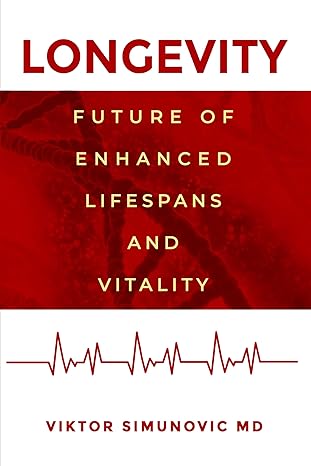
Teaser from the Book: Foreverolimus “The Rise of Biohacking and Senolytics” At its heart, biohacking is a philosophy that values self-improvement and self-discovery and that provides people with an active, hands-on approach to shaping their biological fortunes. Biohacking practitioners apply different strategies—from gene editing and nootropics supplements to intense biofeedback and lifestyle changes—with their main goal of modifying physiological processes and increasing overall well-being. The rapid development of technology paired with a rapidly growing change towards customized healthcare makes this field not only exceptionally promising but also breaks new and unprecedented ethical grounds. Digging into biohacking would not be exhaustive without considering not just the scientific and technological aspects, but also how these practices affect individuals and society. Biomarkers as the measurable indicators of the biological status or the condition is the core of modern medicine. Biomarkers are a combination of molecular and cellular/physiological measurements that give clear evidence of the health status of a person. These markers comprise various types such as genomics, proteomics, radiomics, and clinical, which diagnostically, prognostically, and therapeutically have tremendous significance. Biomarkers are very important in science because they help identify diseases at an early stage, personalize the treatment, and determine accurately the efficacy of the treatment. Because the specific biomarkers enable the detection of diseases more accurately, doctors not only can forecast more precisely but also choose the best therapy approaches. Furthermore, biomarkers help not only to develop new treatments but also to identify drug targets and to observe the results of the treatment in clinical trials. CRISPR’s use in biohacking initiatives arouses both enthusiasm and ethical issues. On the other hand, Personalized genetic interventions hold great promise of curing genetic diseases, boosting bodily function and even enhancing cognitive ability. However, CRISPR’s accessibility and its use outside the traditional laboratory setting also raises fundamental questions about the aspect of safety, equity, and the unforeseeable consequence of gene editing method. Discussion of the Ethical Questions Raised by DIY Genetic Engineering: An important ethical problem of DIY genetic engineering is safety. Although CRISPR technique provides never seen before precision, there is still a possibility of off-target effect and unintentional outcomes, especially when it is in virtue of unqualified DIY biohackers. The lack of strong oversight and regulatory frameworks for DIY genetic engineering further aggravates existing concerns against these unintended genetic mutations, ecological disruptions, and the heightened risk. Join our Online Workshops: Subscribe to the FOREVEROLIMUS Newsletter Sign up to join 500,000+ other subscribers and receive regular emails on neuroscience, health and science-related topics.
Senolytics 101: A beginner’s guide to cellular rejuvenation
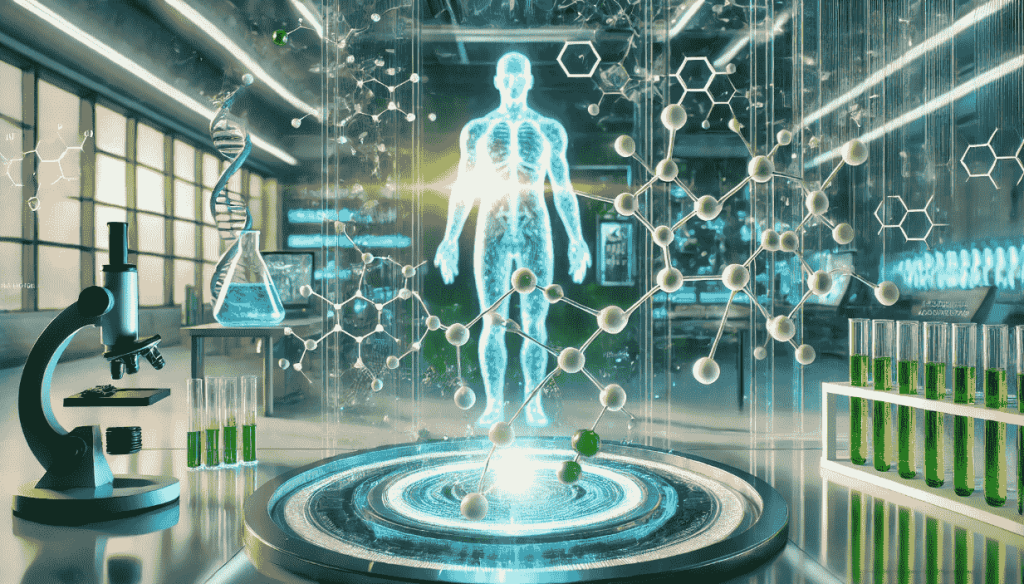
Senolytics 101: A beginner’s guide to cellular rejuvenation Aging is a natural process, yet for centuries, humanity has sought ways to slow its progress or even reverse its effects. With the rise of modern science, one of the most promising fields in anti-aging research is senolytics. This guide explores the science behind senolytics, their mechanisms, and their potential to revolutionize the way we approach health and longevity. Join our Online Workshops: What are senolytics and cellular rejuvenation? Senolytics are class of drugs and natural compounds designed to target and eliminate senescent cells, often referred to as “zombie cells.” These cells have stopped dividing but remain metabolically active, releasing harmful substances that promote inflammation and tissue damage. Senolytics work by selectively inducing apoptosis (programmed cell death) in these cells, thus clearing the way for healthier tissue regeneration and improved cellular function. Cellular rejuvenation, a broader concept linked to anti-aging, focuses on restoring cellular function and vitality. This approach aims to counteract the effects of aging at a cellular level, enhancing overall health and longevity. Senolytics play a crucial role in this process by addressing cellular senescence, a key driver of aging and age-related diseases. Cellular senescence, the biological state where cells cease to divide, is a double-edged sword. While it protects against cancer in younger years by preventing damaged cells from proliferating, it becomes detrimental over time. Accumulated senescent cells secrete inflammatory factors and degrade tissue integrity, contributing to chronic diseases, decreased vitality, and visible signs of aging. What is cellular senescence? Cellular senescence is a biological process where cells permanently stop dividing in response to damage or stress. This mechanism is protective in younger individuals, preventing damaged cells from becoming cancerous. However, as we age, senescent cells accumulate and disrupt the body’s normal functions. This leads to a decline in physical and cognitive health and increases the risk of diseases such as cancer, Alzheimer’s, and osteoporosis. Senescent cells differ from healthy cells in several ways: Altered Functionality: They secrete inflammatory molecules, growth factors, and proteases, collectively known as the Senescence-Associated Secretory Phenotype (SASP). Resistance to Apoptosis: Unlike damaged cells that undergo programmed cell death, senescent cells resist apoptosis, allowing them to persist and cause damage to surrounding tissues. Impact on Stem Cells: They negatively affect stem cell function, hindering tissue regeneration and repair. Causes of cellular senescence Telomere Shortening: Telomeres, the protective caps at the ends of chromosomes, shorten with each cell division. Once they become critically short, cells enter a senescent state to prevent genomic instability. DNA Damage: Exposure to environmental factors like UV radiation, pollution, and toxins can cause DNA damage, triggering senescence as a protective mechanism. Oxidative Stress: An imbalance between reactive oxygen species (ROS) and the body’s antioxidant defenses leads to oxidative stress, damaging cells and hastening senescence. Chronic Inflammation: Persistent low-grade inflammation accelerates cellular damage and promotes senescence. Effects of senescent cells on the body Senescent cells exert widespread effects that contribute to aging and disease: Secretion of Pro-Inflammatory Factors (SASP): Senescent cells release cytokines, proteases, and growth factors, collectively termed the Senescence-Associated Secretory Phenotype (SASP). These factors fuel chronic inflammation, damaging tissues and promoting diseases like arthritis and cardiovascular issues. Impaired Tissue Function and Regeneration: The presence of senescent cells hampers the ability of tissues to repair and regenerate, leading to functional decline. Increased Risk of Age-Related Diseases: Accumulated senescent cells are linked to conditions such as Alzheimer’s, diabetes, osteoporosis, and cancer. How senolytics therapy works? Mechanism of action Senolytic agents target vulnerabilities in senescent cells, inducing their removal and improving overall tissue health. Inducing Apoptosis in Senescent Cells: By activating pathways like p53 and inhibiting anti-apoptotic proteins such as BCL-2, senolytics trigger programmed cell death in senescent cells. Enhancing Immune Clearance: Some senolytics boost the immune system’s ability to recognize and clear senescent cells. Senolytics vs. Senomorphics: Unlike senolytics, which eliminate senescent cells, senomorphics modulate their behavior to reduce harmful effects like SASP without inducing cell death. Benefits of senolytic therapy Improved Tissue Homeostasis: Removal of senescent cells restores balance and promotes tissue health. Enhanced Stem Cell Function: Clearing senescent cells creates a more supportive environment for stem cell renewal and repair. Reduced Inflammation and Oxidative Stress: Senolytics mitigate the damaging effects of SASP, lowering chronic inflammation and oxidative damage. Lifestyle factors that support senolytic effects Incorporating healthy lifestyle habits can amplify the benefits of senolytics: Nutrient-Rich Diet: Diets high in antioxidants and polyphenols, such as those found in berries, leafy greens, and nuts, combat oxidative stress. Regular Exercise: Physical activity promotes cellular health by reducing inflammation and enhancing immune function. Stress Management: Chronic stress accelerates cellular aging; mindfulness practices like meditation can counteract this effect. Quality Sleep: Sleep is essential for cellular repair and the removal of toxins, supporting senolytic efficacy. Senolytics in food and other natural sources Nature provides several compounds with senolytic properties, including: Quercetin: Found in apples, onions, and green tea, quercetin has demonstrated potent senolytic activity in studies. Fisetin: Abundant in strawberries and persimmons, fisetin targets senescent cells and reduces inflammation. Curcumin: The active compound in turmeric, curcumin combats oxidative stress and supports cellular health. Resveratrol: Present in red wine and grapes, resveratrol promotes longevity by activating sirtuins and reducing inflammation. Senolytics supplements Several synthetic senolytics are being explored for their anti-aging potential: Dasatinib: This cancer drug selectively eliminates senescent cells, especially in the lungs and fat tissue. Navitoclax (ABT-263): Initially developed for leukemia, this drug targets BCL-2 proteins, inducing apoptosis in senescent cells. UBX0101: A promising experimental drug, UBX0101 aims to alleviate osteoarthritis by removing senescent cells from joints. DQ Combination: A mixture of Dasatinib and Quercetin (DQ) is a popular senolytic regimen, showing synergistic effects in clearing senescent cells. Senolytic drugs and clinical researches Trials on senolytics have demonstrated improved physical function, reduced inflammation, and potential reversals of age-related damage. For example, a 2019 study showed that senolytics improved mobility in older adults. According to a study published in Nature Aging, clearing just 30% of senescent cells in mice extended their median lifespan by 36%
Blue light exposure as a biohacking tool
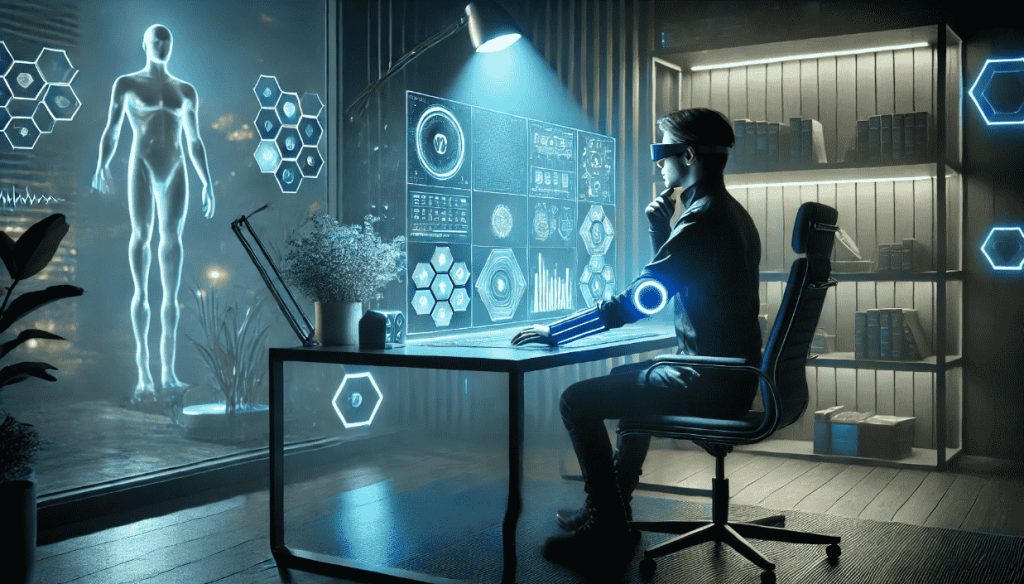
Blue light exposure as a biohacking tool Biohacking, often referred to as DIY biology, involves making incremental changes to optimize physical and mental performance. From dietary supplements to wearable technology, biohacking covers a broad range of strategies aimed at improving health, productivity, and overall well-being. Blue light exposure has become a prominent biohacking tool due to its profound effects on the body’s biological clock, or circadian rhythm. By understanding and manipulating blue light exposure, individuals can potentially enhance cognitive performance, improve mood, and regulate sleep patterns. This makes it a powerful yet accessible tool for anyone seeking to maximize their potential. Join our Online Workshops: What is blue light? Blue light is a high-energy visible (HEV) light with wavelengths between 400 and 495 nanometers. It is naturally emitted by the sun and is crucial for regulating our wakefulness and energy levels. Artificial sources of blue light include LED screens, smartphones, fluorescent lights, and specialized therapy lamps. Exposure to blue light stimulates the retina, which sends signals to the brain’s suprachiasmatic nucleus (SCN), the central hub for regulating circadian rhythms. This signaling process plays a critical role in hormone production, particularly melatonin, the sleep hormone. Circadian rhythms are 24-hour cycles that dictate physiological processes, including sleep, digestion, and mood regulation. Blue light exposure in the morning helps synchronize these rhythms, boosting alertness and productivity. Conversely, excessive exposure at night can disrupt these cycles, leading to sleep disturbances. In the visible light spectrum, blue light sits at the shorter wavelength end, making it more energetic than red or green light. This high energy allows blue light to penetrate deeply into the eye, affecting photoreceptors and influencing biological responses. Uses of blue light for biohacking Benefits of blue light exposure The circadian clock relies on environmental cues, primarily light, to maintain its rhythm. Controlled blue light exposure acts as a signal to the body to stay awake and alert, particularly in the morning. Studies indicate that blue light exposure enhances mood by stimulating serotonin production. This neurotransmitter is associated with feelings of happiness and well-being, making blue light a natural mood booster. Serotonin production increases with morning blue light exposure, contributing to better mental clarity and focus throughout the day. This link also explains why light therapy is commonly used for seasonal affective disorder (SAD). Blue light triggers alertness and sharper cognitive performance. Research shows that individuals exposed to blue light perform better in memory-related tasks and experience fewer instances of brain fog. Blue light exposure optimizes hippocampal function, a region of the brain vital for memory retention. By aligning blue light exposure with peak cognitive times, biohackers can maximize their learning and retention capabilities. Timing is critical when using blue light for sleep optimization. Exposure during the morning aligns the circadian rhythm, promoting better sleep at night. On the other hand, avoiding blue light in the evening reduces melatonin suppression. Morning exposure encourages wakefulness and energy, while evening exposure should be minimized to prevent sleep disruption. Utilizing blue-blocking glasses or reducing screen time at night can mitigate adverse effects. Blue-blocking glasses filter harmful wavelengths while allowing beneficial ones, enabling biohackers to reap blue light’s advantages without the associated risks of overexposure. Blue light’s impact on alertness and energy extends to physical performance. Athletes often use blue light therapy to enhance reaction times and physical endurance, particularly during early workouts. While blue light suppresses melatonin during the day to keep us awake, avoiding it at night allows for a natural increase in melatonin production, critical for restorative sleep. Best practices For maximum benefits, expose yourself to blue light within two hours of waking. Morning light therapy sessions lasting 20–30 minutes are optimal. Biohackers often use specialized blue light lamps or wearable devices to maintain consistent exposure, particularly in environments with insufficient natural light. Short bursts of blue light exposure, such as 15–30 minutes, can improve alertness without overwhelming the eyes. Extended sessions may require protective measures like blue-blocking glasses. Devices emitting 5,000–10,000 lux of light intensity are recommended for effective light therapy. Ensure the intensity is appropriate for the setting and time of day to avoid overstimulation. Adjusting screen settings to “night mode” reduces blue light exposure in the evening. Many devices now feature built-in blue light filters to promote eye health. While natural sunlight is the best source of blue light, artificial devices like therapy lamps can fill the gap, especially during winter months or for individuals in low-light environments. Potential risks and precautions Although beneficial when used correctly, excessive blue light exposure can strain the eyes, disrupt sleep, and negatively impact mental health. Prolonged exposure to screens can cause digital eye strain, characterized by dryness, irritation, and difficulty focusing. Blue light at night suppresses melatonin, leading to insomnia and fatigue. Tips to mitigate negative effects of blue light Use blue-blocking glasses or screen filters. Take regular breaks following the 20-20-20 rule: every 20 minutes, look at something 20 feet away for 20 seconds. Dim screens or use “night mode” in the evening. While blue light can boost mood, overexposure may increase the risk of anxiety and stress due to overstimulation. Avoid blue light exposure at least 2–3 hours before bedtime to allow for natural melatonin production and optimal sleep quality. If overexposed, reduce screen time, use protective glasses, and increase ambient lighting to counteract strain. Is blue light exposure right for your biohacking journey? Blue light serves as a valuable tool in biohacking, offering significant benefits when used strategically. By understanding its effects on circadian rhythms, productivity, and cognitive performance, individuals can incorporate blue light into their routines for measurable gains. However, balance is key; overuse can lead to adverse effects, underscoring the importance of informed and cautious application. FAQ Subscribe to the FOREVEROLIMUS Newsletter Sign up to join 500,000+ other subscribers and receive regular emails on neuroscience, health and science-related topics.
Intermittent fasting as a biohacking tool
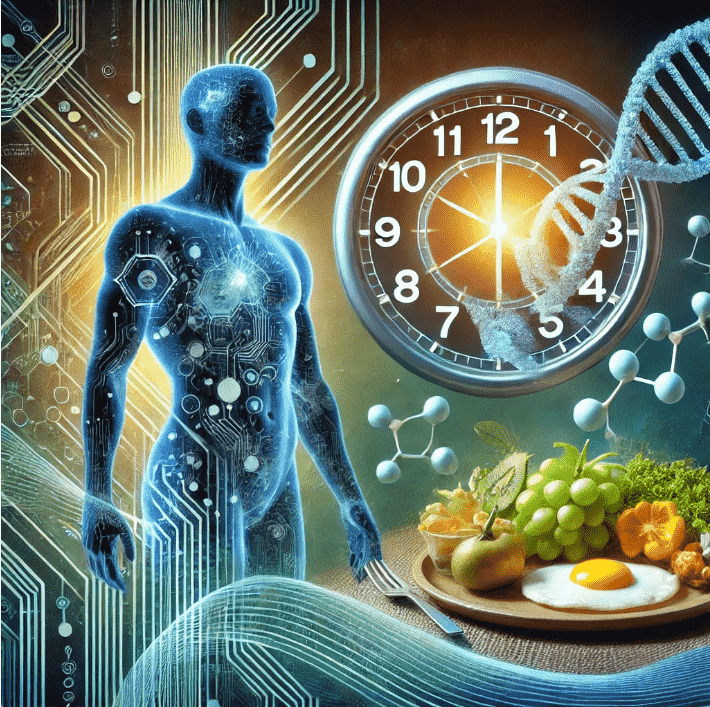
Intermittent fasting as a biohacking tool Biohacking is a rapidly growing trend that combines science, technology, and personal experimentation to optimize physical and mental performance. It encompasses practices ranging from advanced supplements to wearable technology. One of the most potent and accessible tools in the biohacking arsenal is intermittent fasting (IF). Intermittent fasting is more than a weight-loss strategy; it’s a way to reset and enhance your body’s natural processes. Its popularity in the biohacking community stems from its ability to trigger profound metabolic and cellular changes, boosting energy, focus, and longevity. Join our Online Workshops: What is intermittent fasting? Intermittent fasting is an eating pattern that alternates between periods of eating and fasting. Unlike traditional diets, which focus on what to eat, IF is more concerned with when to eat. During fasting periods, the body activates mechanisms that repair cells, burn fat, and balance hormones. This time-restricted eating approach mimics ancestral eating habits, where food was not always readily available. Modern science validates this practice, showing that intermittent fasting enhances metabolic health and slows aging. How intermittent fasting works? The body’s response to fasting periods During fasting, the body transitions from using glucose (sugar) as its primary energy source to burning stored fat. This process, called metabolic switching, helps improve insulin sensitivity and promotes fat loss. Glucose Levels Drop: Within 12 hours of fasting, glucose levels decline, and the body starts relying on glycogen stores. Ketosis Begins: Prolonged fasting triggers ketosis, where fat is converted into ketones for energy, boosting brain function. Autophagy: The body’s natural detox process Autophagy is a cellular cleanup process activated during fasting. Damaged cells and proteins are recycled, reducing the risk of chronic diseases like cancer and neurodegenerative conditions. Hormonal changes during fasting Fasting influences critical hormones, including: Insulin: Reduced insulin levels promote fat breakdown. Human Growth Hormone (HGH): HGH levels can increase by up to 300%, aiding muscle growth and repair. Metabolic effects Studies show that fasting enhances metabolic rate by 3–14%, improving fat oxidation and increasing energy efficiency. This results in better weight management and reduced inflammation. Different intermittent fasting schedules 1. 16/8 Method Fast for 16 hours and eat within an 8-hour window. Ideal for beginners due to its simplicity. 2. 5:2 Diet Consume only 500–600 calories on two non-consecutive days while eating normally on the other five days. 3. Eat-Stop-Eat Approach Involves a 24-hour fast once or twice a week. Helps improve metabolic flexibility. 4. Alternate-Day Fasting Fast every other day, with limited or no calorie intake on fasting days. 5. OMAD (One Meal a Day) Eat one nutrient-dense meal daily, suitable for experienced fasters seeking rapid results. 6. Warrior Diet Consume small amounts of raw fruits and vegetables during the day and a large meal at night. Benefits of intermittent fasting as a biohacking strategy Fasting offers numerous health benefits, starting with weight loss. It creates a caloric deficit without requiring strict dieting, and research shows it can reduce body weight by 3–8% over 3–24 weeks. Additionally, fasting boosts mental clarity and focus by increasing brain-derived neurotrophic factor (BDNF), which enhances cognitive performance and memory. Studies suggest fasting also promotes anti-aging and longevity by activating autophagy and reducing oxidative stress. Regular fasting improves metabolic health by enhancing insulin sensitivity and regulating blood sugar, thus reducing the risk of type 2 diabetes. Fasting stimulates cellular repair mechanisms, improving overall health and resilience. It optimizes brain function by reducing inflammation and promoting ketosis, potentially protecting against Alzheimer’s and Parkinson’s diseases. Lastly, fasting enhances gut health by supporting the gut microbiome, allowing the digestive system to rest, and reducing bloating and inflammation. How to start intermittent fasting? Start with a manageable fasting window, such as 12/12, and gradually increase fasting periods. Match fasting methods to your lifestyle. For instance, the 16/8 method is great for active individuals, while OMAD suits those seeking simplicity. Stay hydrated with water, herbal teas, or black coffee. Distract yourself with light activities or work during fasting hours. Prioritize whole foods: Vegetables, fruits, lean proteins, and healthy fats. Avoid processed foods and sugary snacks. Use apps like Zero or journals to monitor fasting patterns and results. Potential side effects and challenges Common Side Effects Headaches: Caused by dehydration; counter with electrolyte-rich water. Fatigue: Normal during the initial adaptation phase. When to Stop Intermittent Fasting Discontinue fasting if you experience dizziness, extreme fatigue, or other concerning symptoms. Who Should Avoid Fasting? Pregnant or breastfeeding women. Individuals with eating disorders or certain chronic conditions. Is intermittent fasting ultimate biohacking tool? Intermittent fasting is a powerful biohacking strategy, offering a wide array of physical and mental benefits. From weight loss to enhanced cognitive performance, fasting is a versatile tool for optimizing health. Start experimenting with fasting methods to discover what works best for your body and goals. FAQ Subscribe to the FOREVEROLIMUS Newsletter Sign up to join 500,000+ other subscribers and receive regular emails on neuroscience, health and science-related topics.
How to use an elimination diet as a biohacking tool for optimal health?

How to use an elimination diet as a biohacking tool for optimal health? In the quest for optimal health, biohacking has gained immense popularity, offering personalized approaches to enhance physical and mental well-being. One powerful, yet often overlooked, tool in the biohacker’s toolkit is the elimination diet. By removing and reintroducing certain foods, elimination diets can reveal the hidden factors impacting energy levels, mood, and digestive health. This process not only clarifies what fuels your body best but also acts as a reset, guiding you towards a more balanced and health-aligned way of eating. Whether you’re aiming to address chronic health issues or just want to optimize daily performance, using an elimination diet strategically can lead to remarkable insights and empower you to make more informed dietary choices. Join our Online Workshops: What is an elimination diet? An elimination diet is a systematic approach to identifying food sensitivities or intolerances by temporarily removing specific foods from your diet and then slowly reintroducing them. The goal is to observe how each reintroduced food affects your body, helping you pinpoint triggers of negative symptoms. While elimination diets have been traditionally used in clinical settings to help those with allergies or digestive issues, they’re now widely recognized as a biohacking tool for anyone looking to optimize health. In a typical elimination diet, foods known to cause common issues—such as dairy, gluten, soy, eggs, and processed sugars—are removed for a set period, often two to six weeks. After this phase, these foods are gradually reintroduced one at a time, while you monitor and note your body’s responses. This structured process allows you to understand better how specific foods impact your health and to create a diet that aligns with your unique biology. The role of eliminetion diets in biohacking Elimination diets are a highly practical tool in biohacking because they directly engage with the principle of self-experimentation and optimization. Through observation and adjustment, biohackers aim to understand how external factors—like food—affect internal systems, such as metabolism, inflammation, and cognitive function. The connection between diet and well-being is deeply personal, as reactions to food can vary widely across individuals. Benefits of using elimination diets for biohacking Using an elimination diet in biohacking offers several key benefits: Personalized insights: Unlike standard diet plans, elimination diets allow you to gather data specific to your body, highlighting how different foods impact you personally. Enhanced energy and focus: Identifying and removing foods that cause sluggishness, brain fog, or fatigue can lead to improved energy levels and mental clarity. Improved gut health: Digestive discomforts like bloating, gas, or constipation often stem from food sensitivities. An elimination diet can help you understand which foods to avoid for optimal gut function. Reduced inflammation: Some foods can trigger inflammatory responses, which may manifest as joint pain, skin issues, or autoimmune flare-ups. Reducing or eliminating these foods can lead to a noticeable reduction in inflammation. Sustainable dietary habits: Once you’ve identified foods that suit your body best, maintaining a diet tailored to your health needs becomes easier and more sustainable in the long term. In essence, elimination diets are a tool for self-discovery and empowerment, helping you build a diet that supports your biohacking goals and enhances your overall health. How to start an elimination diet? Starting an elimination diet requires careful planning, dedication, and an openness to observe subtle changes. Here’s a step-by-step guide to get started: Choose your focus: Decide which foods you suspect could be causing issues. Common culprits include gluten, dairy, eggs, soy, and processed foods. Set a timeline: An elimination phase typically lasts two to six weeks. During this time, commit to completely avoiding the targeted foods. Document your baseline: Track symptoms like energy, mood, digestive health, and skin condition before beginning, so you have a reference point for changes. Be patient and observant: Changes may take time to appear. Monitor symptoms daily to get a clear picture of how your body is reacting to the elimination phase. Reintroduction phase: Identifying triggers After the elimination phase, reintroducing foods is the most crucial part of the process. Here’s how to approach it: Introduce one food at a time: Start with a small portion, and gradually increase it over three days, monitoring any reactions in the body. Take notes on symptoms: Observe physical and emotional changes, including any digestive discomfort, skin reactions, mood shifts, or energy fluctuations. Wait before the next reintroduction: Allow a couple of days between each food to ensure any reactions are linked to that specific food. The reintroduction phase helps you pinpoint trigger foods that don’t align with your body’s needs, empowering you to adjust your diet for maximum well-being. Common challenges and how to overcome them An elimination diet can be challenging, especially with the temporary removal of favorite foods. Here are some common obstacles and tips for overcoming them: Social eating challenges: Eating out or with friends can be difficult. Plan by checking menus in advance, choosing restaurants with flexible options, or bringing your own food. Cravings: Managing cravings can be tough, particularly in the early days. Focus on nutrient-dense meals that keep you satiated, and remember that cravings tend to subside over time. Patience: Results aren’t always immediate, and waiting for changes can be challenging. Remind yourself that lasting results are worth the effort. Maximizing results from your elimination diet To get the most out of your elimination diet, consider these strategies: Stay hydrated: Drinking enough water aids digestion and helps manage any detox effects from the elimination phase. Incorporate mindfulness: Reflect on your emotional relationship with food. Sometimes, cravings or symptoms can be linked to stress or other non-dietary factors. Use tracking tools: Apps or journals can help you log symptoms, making it easier to identify patterns and correlations during the reintroduction phase. Be consistent: Consistency is crucial in elimination diets. Stick to the plan as closely as possible to ensure accurate results. Types of elimination diets There are several types of elimination diets, each with a unique approach depending on specific
Caffeine consumption as a biohacking tool

Caffeine consumption as a biohacking tool Caffeine has long been a go-to substance for people seeking a quick energy boost or a way to stay alert. In recent years, however, its use has evolved beyond a morning ritual into a strategic biohacking tool. Biohackers—those passionate about optimizing their physical and mental performance—have harnessed caffeine’s potential to enhance focus, mood, and physical stamina in a controlled and purposeful way. Here, we explore the science-backed benefits of caffeine in biohacking, safe practices for its consumption, and practical strategies for maximizing its potential. Join our Online Workshops: Benefits of caffeine as a biohacking tool Caffeine works like a natural super-serum for the human body and serves as a remarkable performance enhancement tool. Research shows it makes several aspects of human performance better, making it a great addition to the biohacking toolkit. Your brain gets significant benefits from caffeine. Studies show that low to moderate dosage can make you feel more energetic, improve your mood, and boost cognitive functions. You’ll notice better attention spans and quicker reaction times. It also helps you access important neurotransmitters like acetylcholine that help with short-term memory and learning. Here’s how it improves your physical and mental performance: More oxygen flows to your brain which speeds up cognitive processing Your pupils dilate to help you see details better Your DNA repair capabilities get better Your insulin resistance drops and glucose management improves Your physical strength and reflexes become sharper Caffeine shines as a biohacking tool because it knows how to stimulate adrenaline production in controlled amounts. This natural boost helps you get into flow states and powers up your brain through increased oxygen flow. Research shows these benefits peak at about 4-5 cups per day, which equals two grande-sized Starbucks drinks. The timing of your caffeine intake matters significantly. Since caffeine has a six-hour half-life, you should stop drinking it around 2 PM to sleep well. This biohacking technique can keep you alert and improve your memory for up to four hours per dose when you use it right. How to use caffeine for biohacking? Proper timing and implementation can help you maximize caffeine’s potential as a biohacking tool. Military research has developed sophisticated algorithms that show strategic timing can reduce caffeine needs by 65% and increase alertness by 64%. These brewing techniques work best to get the most caffeine: Use Robusta beans instead of Arabica for higher caffeine content Opt for cold brew preparation for maximum caffeine concentration Use finely ground beans to increase surface area Choose medium roasts over dark roasts Extend steeping time for greater extraction The right timing is vital for caffeine to work effectively. Research suggests you should space your intake throughout the day, with optimal consumption points at 7 AM, 10 AM, 1 PM, and 3 PM. This schedule helps maintain peak alertness during standard work hours without disrupting your sleep. You can magnify caffeine’s benefits by combining it with specific nutrients to improve your biohacking results. Adding clean proteins and medium-chain triglycerides (MCTs) to coffee can boost your energy levels and reduce hunger cravings. This works especially when you have ketogenic or paleo dietary protocols. Military researchers’ 2B-Alert system provides precise caffeine dosing calculations based on your sleep patterns and performance requirements. This tool helps optimize alertness while minimizing overall caffeine consumption and is a great way to get serious about performance optimization in biohacking. Risks and side effects Caffeine brings many benefits to biohacking enthusiasts, but you need to understand its potential risks to use it safely. Research shows that your genes can substantially affect how you process caffeine. About 50% of people carry a CYP1A2 gene variant that makes their bodies break down caffeine more slowly. Too much caffeine can cause these common side effects: Sleep problems and insomnia Feelings of anxiety and nervousness Heart-related issues Headaches and migraines Shaky muscles Need to urinate more often Your body takes time to process caffeine. Studies reveal it has a half-life of about six hours, which means half of it stays in your system after this time. This can hurt your sleep quality even if you stop drinking it early in the afternoon. To stay safe, experts say you should keep your intake under 400mg daily. Your heart health needs extra attention when using caffeine for biohacking. High doses can trigger heart palpitations and different types of irregular heartbeats. On top of that, it can raise blood pressure in people with normal or high blood pressure by making blood vessels constrict. Pregnant women should be extra careful because caffeine passes through to the baby and can change the baby’s heart rate. The American College of Obstetrics and Gynecology suggests keeping caffeine below 200 milligrams daily during pregnancy. Keep in mind that powdered caffeine is very concentrated – just one teaspoon equals about 25 cups of coffee How much caffeine is safe to consume daily? Safe caffeine consumption limits play a fundamental role in effective biohacking. The FDA considers a daily intake of 400 milligrams safe for most adults, which equals about two to three 12-fluid-ounce cups of coffee. Your body’s metabolism plays a significant role in caffeine tolerance. Studies reveal that people process caffeine differently – some get jitters from just one cup while others can drink multiple cups without any side effects. Biohacking experts recommend these guidelines: Start with small amounts to test your tolerance Limit intake to 1-2 cups daily if you’re sensitive Keep consumption balanced throughout the day Don’t drink multiple cups back-to-back in the morning Caffeine’s six-hour half-life makes timing essential. When you drink an espresso at 4 PM, half the caffeine stays active at 10 PM. The FDA cautions that consuming approximately 1,200 milligrams quickly can lead to toxic effects. The Institute for the Advancement of Food and Nutrition Sciences conducted a systematic review in 2017 that validated the 400-milligram daily limit’s safety for most adults. Sleep coach Nick Littlehales suggests avoiding 1,000-1,500mg before lunch and recommends a steady, balanced approach during the day. Can caffeine